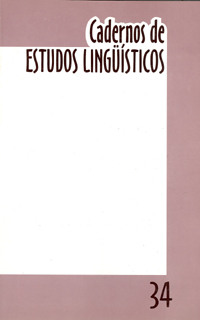Resumo
The aim of this paper is to investigate negation in (Brazilian)Portuguese. There are two general types of negation: one that operates over the matrix sentence and another one which is non-sentential. If negation is defined by a unique Neg constituent (which can project to NegP, if necessary), each type can be represented in terms of (asymmetric) C-command such that, at least at LF, Neg c-commands the constituent over which it has scope. Concerning sentential negation, Neg subcategorizes for IP (TP), the constituent which is the sentential operator. Negative Polarity Item (NPI) licensing is taken to be a diagnosis for that structure: since NPIs have to move to Spec of NegP at LF and since move alpha can target only c-commanding Specs (positions), Spec of NegP (and the head Neg) must c-command NPIs. Otherwise, NPIs must be in Spec of NegP before Spell-Out. As for non-sentential negation, we have to distinguish two types. The first one is structured
like sentential negation so that Neg takes a complement. However this constituent is not (the matrix) TP, but a minor sentence constituent like an embedded finite or non-finite sentence, an A or an N. Since Neg c-commands the complement, a NPI is licensed inside the complement. The other type of sentential negation is structured as an adjunct of the negated constituent. In this case, the c-command condition does not hold and a NPI cannot be licensed by this Neg which do not project to NegP.
Referências
BAKER, M. 1988. Incorporation. A Theory of Grammatical Function Changing. Chicago, The University of Chicago Press.
CHOMSKY, N. 1976. “Conditions on rules of grammar”. Linguistic Analysis, nº 2: 303-351.
______. 1986. Barriers. Cambridge, MIT Press.
______. 1989. “Some notes on economy of derivation and representation”. MIT Working Papers in Linguistics 10: 43-75.
______. 1995. The Minimalist Program. Cambridge, MIT Press.
HAEGEMAN, L. 1995. The Syntax of Negation. Cambridge, CUP.
ILARI, R. & J. W. GERALDI. 1987 (3ª ed.) Semântica. SP, Ática.
KAYNE, R. 1994. The Antisymmetry of Syntax. Cambridge, MIT Press.
KLIMA, J. 1964. “Negation in English” In: J. Fodor & J. Katz (eds) The Structure of Language. N. Jersey, Preentice-Hall, 246;332.
LAKA, I. 1990. Negation in Syntax: on the Nature of Functional Categories and Projections. PhD Thesis, MIT.
MIOTO, C. 1992. Negação Sentencial no Português Brasileiro e Teoria da Gramática. Tese de Doutorado, UNICAMP.
POLLOCK, J-Y. “Verb Movement, UG and the Structure of IP”. Linguistica Inquiry, 20: 365-424.
RAPOSO, E. 1985. “Some asymetries in the binding theory in Romance”. The Linguistic Review 5: 75-110.
RIZZI, L. 1990. Relativized Minimality. Cambridge, MIT Press.
______. 1991. “Residual Verb Second and the WH-criterion” In: Technical Reports in Formal and Computacional Linguistics 2, Université de Génève.
______. 1995. “The Fine Structure of Left Periphery”. In: Liliane Haegeman (ed.) Elements of Grammar: 281-337. Kluwer Academic Publishers.
ZANUTTINI, R. 1991. The Syntactic Properties of Sentential Negation. A Comparative Study of Romance Languages. PhD Thesis, Univesity of Pennsylvania.
O periódico Cadernos de Estudos Linguísticos utiliza a licença do Creative Commons (CC), preservando assim, a integridade dos artigos em ambiente de acesso aberto.

